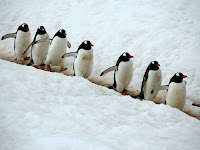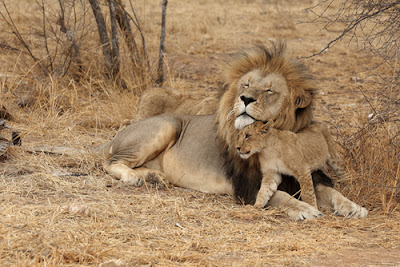Ohy my yummy goodness! Just last night I was thinking, now that it's getting warmer, it's the perfect time to start thinking about s'mores. Crispy gooey marshmallows melting a square of chocolate on a graham cracker.
Then today I was looking around on
www.pinterest.com and found this photo:
It looked interesting, so I had to head over to
http://www.ohparty.net/party-recipes-gourmet-smores-table.php to check it out. The article had tips for setting up a Gourmet S'mores table for a summer picnic. On their table, they have flavored marshmallows (raspberry, vanilla, chocolate, and lime), several different types of chocolates, and bowls of extras like chopped nuts or shredded coconut to add to your treat.
While this all sounds very yummy, it got me thinking about the idea of flavored marshmallows. I don't know if I've been living under a rock, but the only marshmallows I'm familiar with are the ones in the grocery store that look like 2" round cylinders, or the mini version. Mostly white, although some bags do come in pastel colors. But, to my knowledge, they all taste about the same. Personally, I'm not a huge marshmallow fan myself. I like to have s'mores a couple of times a year, and perhaps a marshmallow in hot chocolate (not a big hot chocolate drinker), but I've been known to have a bag of marshmallows that has grown rock-hard from sitting in the pantry too long. Still, I might be game to try a raspberry-chocolate smore.
Luckily, Oh Party also shares a grouping of links to some candy-makers on Etsy who sell homemade flavored marshmallows. The first one I went to visit was Mia Mallows:
http://www.etsy.com/shop/miaMallows
Mia Mallows is run by Mimi Candanoza-Gamez in San Antonia, TX. Each package is made fresh, and is sold in 6, 12, or 18 marshmallows, ranging from $6-18. Her shop provides 35 different flavors of gourmet marshmallows! Wow!
(1)Banana, (2)Bavarian Cream, (3)Blueberry, (4)Caramel, (5)Cherry, (6)Chocolate, (7)Chocolate Chip, (8)Chocolate Mexican Style, (9)Chocolate Mint, (10)Red Hot Cinnamon, (11)Coconut, (12)Coffee, (13)Cotton Candy, (14)Dulce De Leche, (15)Eggnog, (16)Keylime Pie, (17)Lavender, (18)Lemon, (19)Lime (20)Mango, (21)Maple, (22)Mixed Berries, (23)Orange, (24)Peach, (25)Peanut Butter, (26)Peppermint, (27)Pina Colada, (28) Pineapple, (29)Pomegranate, (30)Praline with Pecans, (31)Pumpkin Pie with Shortbread cookie crumbs, (32)Raspberry (33)Saltwater Taffy, (34)Strawberry, and (35)Vanilla!!!!
The second shop I visited was Calabasas Candy at
http://www.etsy.com/shop/calabasascandyco?section_id=6511775
This shop is run by Cheri, from Calabasas, CA. Her shop specializes in using organic cocoa beans that are ethically grown, and besides making gourmet marshmallows, she makes several different varieties of gourmet caramels. He shop offers some shipping discounts for multiple purchages. Packages come with 15 marshmallows for $7.50, and come in these flavors: coffee, lavendar, cinnamon sugar, blueberry, strawberry, Madagascar vanilla, Maraschino cherry, and banana.
~~~~~~~~~~~~~~~~~~~~~~~~~~~~~~~~~~~~~~~~~~~~~~~~~~~~~~~~~~~~~~~~~~~
Amazing! Who knew that marshmallows could come in so many fun flavors....and then, more importantly - be used to make such fun s'mores. All of this got me thinking - wondering, how do you even make marshmallows? Is it an easy cook-at-home recipe? Or is it very labor intensive with lots of thermometers, special tools, and precision? Looks like a bit of both.
Curious now, I looked around to try to learn what was involved with making marshmallows in general, and how do you go about flavoring them. I found a very good tutorial, complete with step-by-step pictures and instructions at
http://www.instructables.com/id/Homemade-Flavored-Marshmallows/
According to the author, most marshmallows can be made in a home kitchen with general kitchen appliances (maybe a few candy-making specialities, like the candy thermometer). The ingrediants are not too exotic:
3 packages of unflavored gelatin (.75 oz total)
1 cup of ice water
1 cup of light corn syrup
1.5 cups of white sugar
a pinch of salt (1/4 teaspoon if you are the measuring type)
1/3 cup powdered sugar (confectioner's sugar)
1/3 cup cornstarch
non-stick cooking spray
extracts and flavors ( for these, I used vanilla extract, rum flavoring, imitation butter, and peppermint extract)
coating chocolate (optional)
food coloring (optional)
The basic idea involves using ice cold water to mix with gelatin. Then boiling a sugary-syrapy mixture. Carefully combining these two extreme temperature mixtures and blending them for a long time (maybe 15-20 minutes). Then, the mixture will be poured into a heavily floured pan and allowed to sit for 4 or more hours. At that point, the marshmallows are set and you can cut them into pieces. They are done, but this is the stage you could drizzle them with chocolate, dip them into a fondue, or put a coating on the outside.
So - who knows? Maybe an interesting summer project at some point, but I don't think I'll be rushing out to start making marshmallows this week. It does look like it could be a fun activity to do with kids or to create a little something special for an event.
What are your favorite summer desserts?
Missy Bree
@~~~~~~~~~~
























